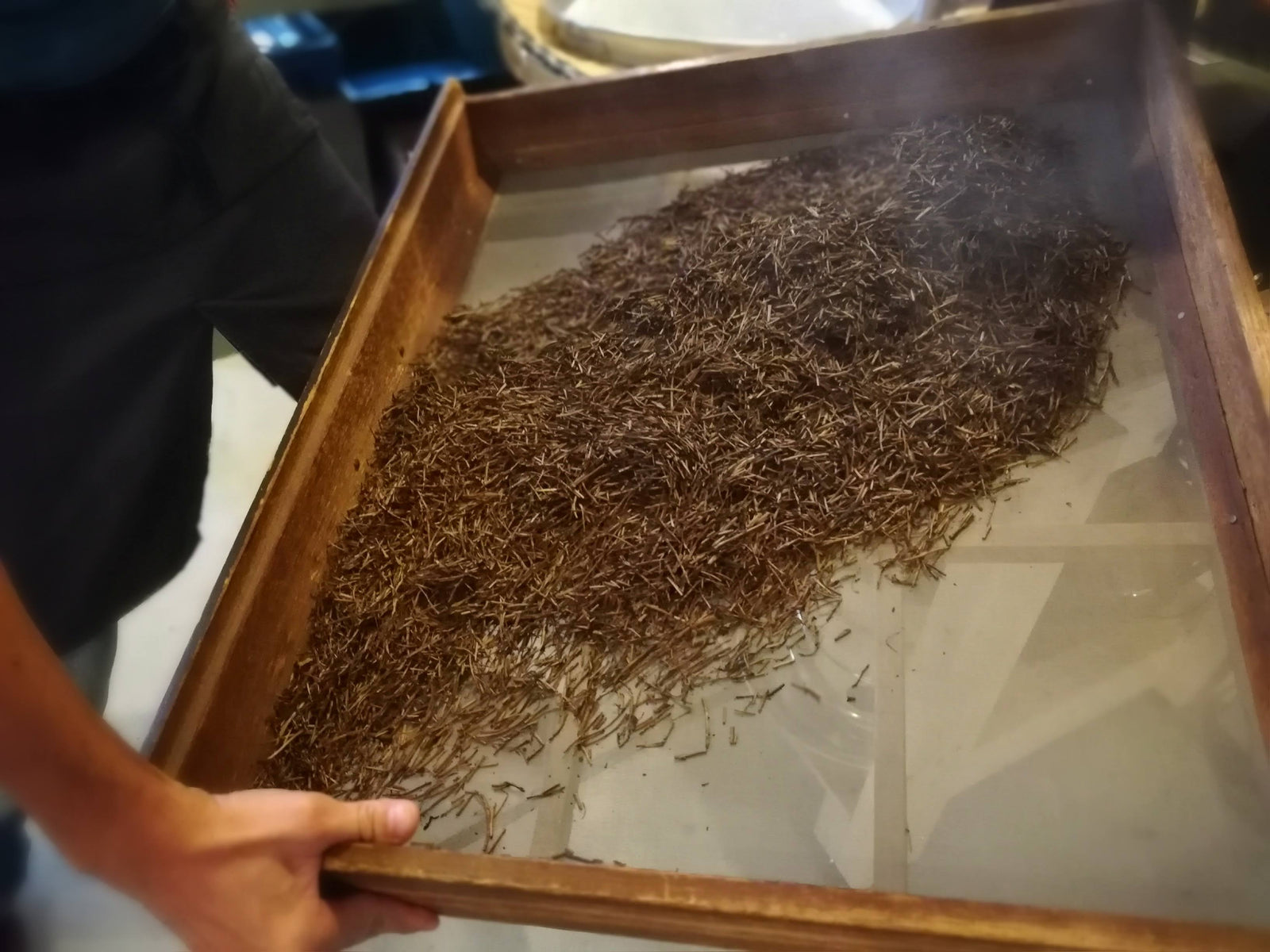One all-time favorite tea and one which ceases to lose popularity among the Japanese is hojicha, a roasted green tea with origins in Kyoto (I will touch on its history in a subsequent post!). In contrast to sencha, hojicha is often enjoyed by children and elders, even in the afternoon-evening time due to its low caffeine content.
Recently, I was asked why hojicha is low in caffeine when it is made from the same plant (camelius senisis). To be honest, as someone who grew up regularly drinking hojicha, this question had not crossed my mind, but my first thought was that it was due to the roasting process of hojicha, which differs from the process of making other Japanese teas (e.g., sencha), which are typically steamed. Upon further research, I discovered that the low caffeine content of hojicha is attributable to three main factors.
First, I was on the right track with respect to the process of roasting the tea leaves at a higher temperature. Specifically, when making hojicha, tea leaves are roasted between 160 to 220 degrees Celsius (depending on how dark one would like the roast to be), which means it generally goes beyond the sublimation boiling point of caffeine at 178 degrees Celsius. That is, the caffeine basically evaporates, diminishing the caffeine content in the tea leaves. This roasting technique is also what gives hojicha its reddish-brown color as well as its sweet, earthy aromatic flavor. One should note; however, that the flavor across different types of hojicha will vary based on factors such as; the roasting method (e.g., gas-powered fire that heats a rotating metal barrel, as compared to roasted over charcoal), roasting time and level of heat (influenced also by the temperature and humidity of the day!), as well as the base tea leaves that were utilized.
Below: American tea farmer Yancy based in Aruse village, Tokushima Prefecture makes his hojicha over charcoal. His light-roasted hojicha is subtle yet perfect for a soft and mellow evening.
This leads us to the second factor impacting hojicha’s caffeine content — the type of tea leaves that are utilized to make hojicha. While sencha, gyokuro and hojicha all come from the same tea plant, hojicha is often made from large, mature leaves that were harvested later on (e.g., second and third harvest in the summer and autumn time). In general, the early season leaves (i.e., ichibancha harvest in the springtime) are used to make the first flush teas like sencha and gyokuro. Leaves from later harvests that have matured and developed with time have lower caffeine content.
Finally, hojicha often includes stems and twigs, which contain very low caffeine, which in effect dilutes the caffeine content of the final product.

Side-by-side images of two different hojicha: Left: Kiroku Tea Garden's Zairai late spring harvest hojicha. Zairai is not a specific cultivar but now quite rare in Japan. Right: Zenkoen’s kuki hojicha which is made specifically with stems/stalks coming from their final bancha harvest. A kukicha hojicha will be lowest in caffeine!
As you can see from the side-by-side images, hojicha can look quite different from each other based on various factors such as the type of tea leaves or parts used, chopping, sifting and roasting method. The visual differences become even more evident when one takes a look at the extensive hojicha collection offered on Yunomi.
To summarize, the 3 reasons why hojicha has less caffeine:
- Roasting Process
- Harvest Period
- Stems and twigs (Parts other than leaves)
Additionally, if you like to see actual numbers or data like myself, here it is! A standard serving size of one cup of hojicha (250 ml) contains about 7.7 mg of caffeine. Hojicha’s caffeine content is lower than a cup of coffee, matcha, or sencha, making it a good alternative to those who are sensitive to caffeine and/or looking to cut their caffeine intake, especially in the latter part of the day.
Below, I present data from a Japanese research study that specifically examined the caffeine content of different types of Japanese tea (1). Please note that this is data simply based from one research study (not an aggregate) and every study comes with limitations. Still, I wanted to provide a visual utilizing data from this study in order for you to obtain a sense of the relative caffeine content across different Japanese teas:

Note: These are general numbers and the caffeine content will vary based on some of the factors touched on in the article.
Hojicha is not completely free of caffeine but it is low enough to drink in the afternoons and evenings without disrupting sleep (unless you are super sensitive to caffeine!). As I mentioned earlier however, the flavor and aroma of different hojichas will differ depending on a myriad of factors. That being said, if you find yourself liking hojicha, I hope that you will also enjoy trying out the different types of hojicha out there! I am always discovering flavorful hojichas to add to my tea repertoire. It is a small but meaningful delight that brightens up my afternoons and evenings, it would definitely make it into my Book of Delights (2). Warm cheers!
References:
- Goto, T., Nagashima, H., Yoshida, Y., & Kiso, M. (1996). Contents of individual tea catechins and caffeine in Japanese green tea. Chagyo Kenkyu Hokoku (Tea Research Journal), 1996(83), 21-28.
- Gay, R. (2019). The Book of Delights: Essays. Algonquin Books.
Featured image: Ogura Tea Garden roasting hojicha. Photo by Sachiko Murata.
Have additional questions about hojicha? Please don't hesitate to post comments and/or questions below. Or directly contact me (Moé Kishida): moe@yunomi.life.


